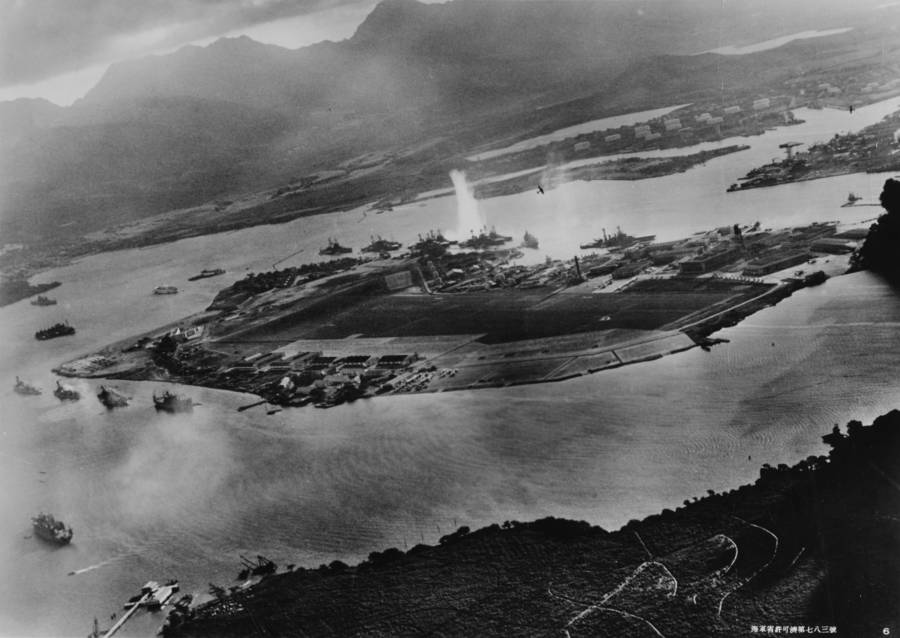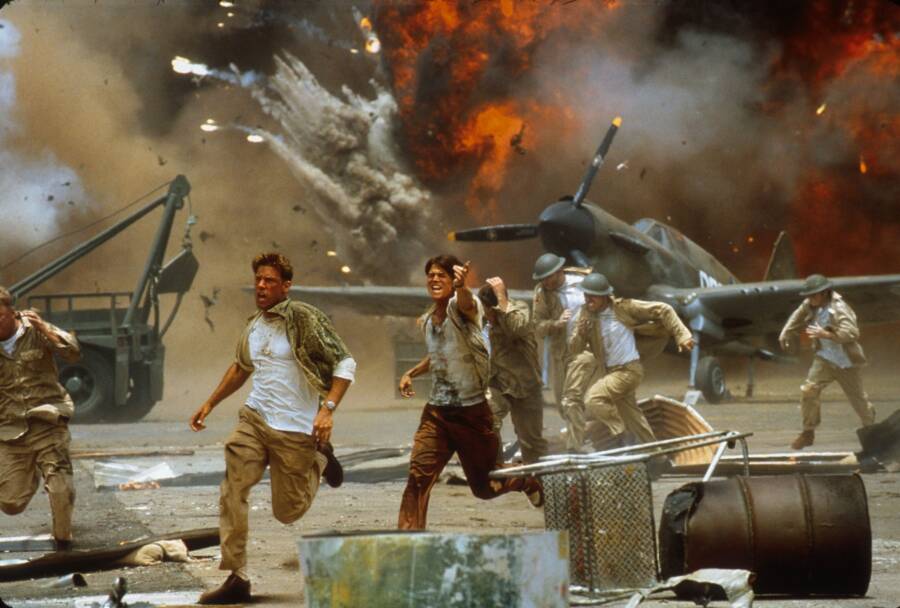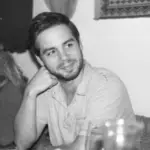The Bombing Of Pearl Harbor By Michael Bay

U.S. Navy/National ArchivesPhotograph taken from a Japanese plane. A torpedo strikes ships moored on both sides of Ford Island during the Pearl Harbor attack.
Michael Bay’s films have never been known for their realism and so it was with great trepidation that audiences awaited his first movie based on a true story: the 2001 release of Pearl Harbor.
According to PearlHarbor.org, it was then the most expensive film of all time. While audiences largely enjoyed the proficient action filmmaking Bay is known for, it received terrible reviews — most notably from veterans who lived through the actual event in 1941.
Pilot Kenneth Taylor, who is portrayed in the film, allegedly called the movie “a piece of trash; over-sensationalized and completely distorted.”
Author of the lauded War In The Pacific: From Pearl Harbor To Tokyo Bay, Harry Gailey, couldn’t believe that a film this expensive would skimp on accuracy. “They spent 150 million on this thing,” he told SF Gate. “They should have been able to afford two or three dollars for a historian.”
What exactly did Bay and screenwriter Randall Wallace get so egregiously wrong? Unfortunately, almost everything.

Touchstone PicturesMichael Bay’s 2001 war drama is arguably the most factually inaccurate film on our list.
Inaccuracies begin with the first shot. The opener features a crop duster flying above two boys in 1923 — even though such a plane wasn’t commercially available until the late 1930s.
“They have Japanese torpedo bombers attacking the American airfields,” complained Gailey. “What are they going to torpedo on an airfield?”
Some might generously dismiss these kinds of filmmaking mistakes as negligible, but Pearl Harbor deviated even further for the sake of a convenient narrative.
For instance, characters Rafe McCawley (Ben Affleck) and Danny Walker (Josh Hartnett) are able to speak to each other from within their respective planes, but this kind of technology didn’t even exist during World War II.
In a later scene, a woman in Hawaii can distinctly overhear the communication between pilots and officials in a control tower via her own radio.
“The idea that she can hear in-plane radios while sitting back in Hawaii is nonsense,” said Bruce Reynolds, a nationally renowned military historian. “Planes did not have radios like that. And the control-tower scene is ludicrous. These things are pure Hollywood and have no relation to reality.”
Bay also films the Arizona Memorial, which wasn’t built until 1962, he uses jet catapults and angled flight decks, which were not employed until the 1950s, and he paints Japanese Zero planes green when they were silver. The litany of ahistorical elements in the film is too lengthy to list.
To be fair, this kind of precision was never Bay’s forté, nor does the bombastic filmmaker seem to care about the element of historical realism. For him, it’s all about the ride.
“When you see the movie, you don’t get a sense of the first or second wave,” argued Bay. “You get a sense of the attack. That’s what’s important. And you need to see this through the eyes of people whom the audience connects with.”
Too bad that ethic wasn’t quite enough to win over audiences who would have much preferred a more realistic interpretation.





